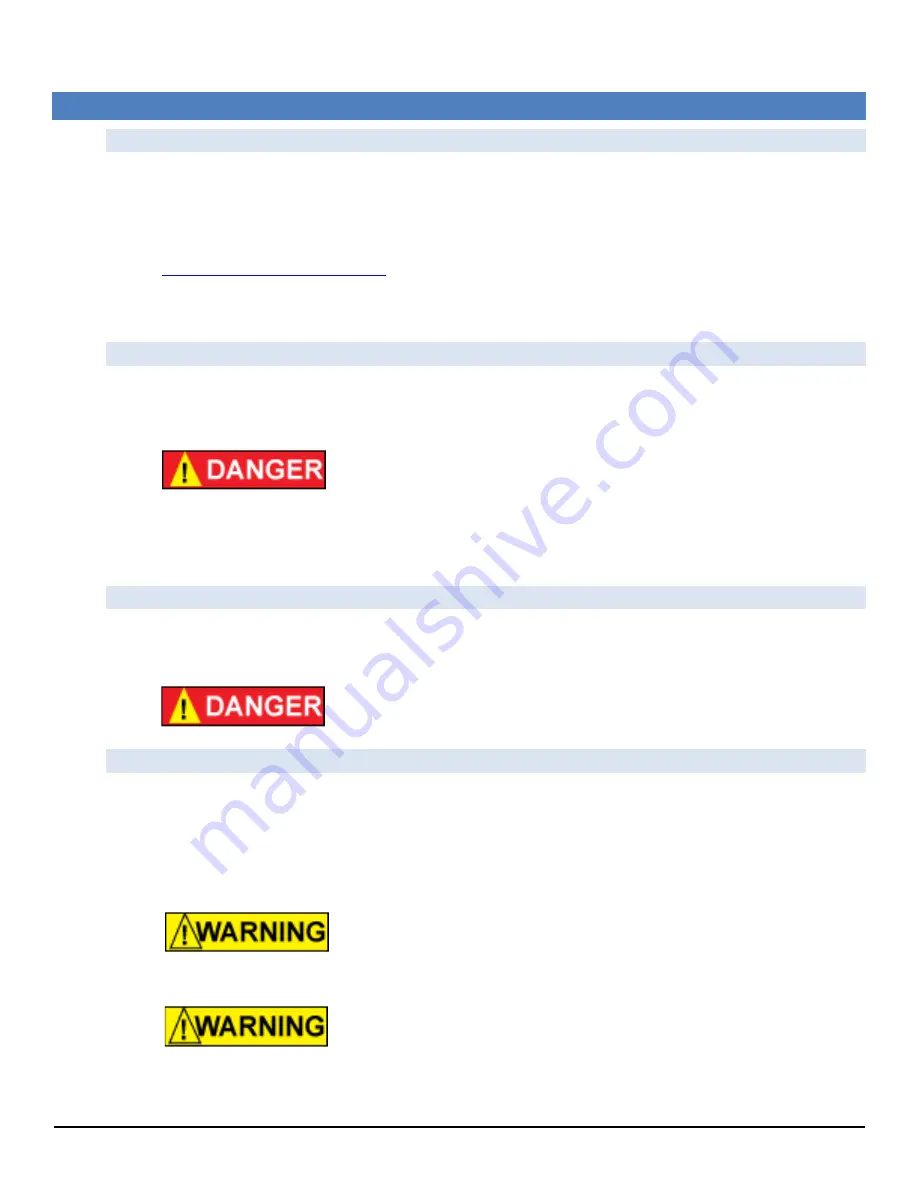
Sentry Air Systems Inc. AirHawk DCH Hoods
| Operation and Maintenance Manual
Model AirHawk
| © 2020 Sentry Air Systems, Inc.| 713-690-2153 | Rev 2
Page | 7
3.0 Operational Safety Practices
3.1
General Work Practices
In well-designed work processes and practices, our products help provide a safe and healthy
environment for workers.
As you evaluate your work practices, a good reference to determine the safety of individual
chemicals is the CDC’s
NIOSH Pocket Guide to Chemical Hazards
, found at
If you encounter uncertainties, consult an Industrial Hygienist and develop an adequate system of
engineered safety controls.
3.2
Lower Flammability Limit
Gas mixtures consisting of combustible, oxidizing, and inert gases are flammable under certain
conditions. The lower flammable limit (LFL) describes the leanest mixture that can sustain a
flame.
This product is not intended for use with explosive or highly
flammable or toxic substances nor environments where the Lower
Flammability Limit may be exceeded.
See each chemical’s specific MSDS for more information on these
limits.
3.3
Preventing Explosion, Fire
Failure to comply with appropriate filter replacement schedules and the safety and operational
guidelines in this document could result in serious injury, fire or explosion.
Do not use this product for applications with a risk of dangerous fire or
explosion.
3.4
Preventing Exposure to Biohazards
Biohazards are infectious agents or chemicals or other materials that present a risk or potential
risk to the health of humans, animals, or the environment.
Some applications may involve the collection of biohazards in filter media. Operators should use
appropriate personal protective equipment aside from the hood itself and when changing the
filters. Multiple engineering safety controls should be in place for your application.
Use of this product with inappropriate chemicals or substances, or
failure to provide regular maintenance may result in contaminated air
being re-circulated into the work environment.
This product is not intended to be used as a substitute for devices such
as personal protective respirators, which are designed to protect users
from poorly absorbed substances, including but not limited to carbon
monoxide, methane, hydrogen, and acetylene.








































